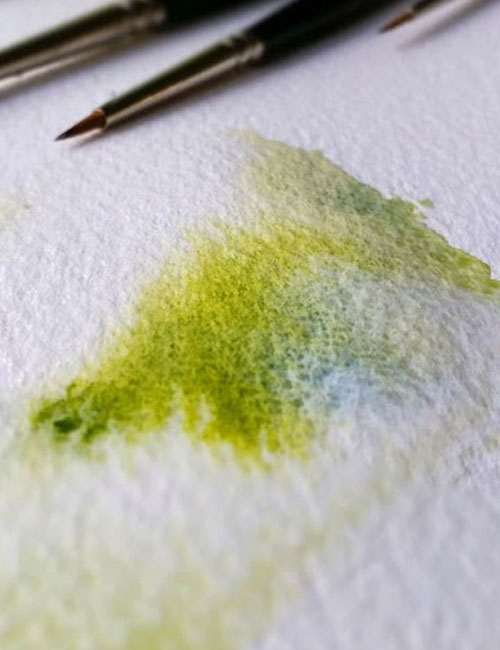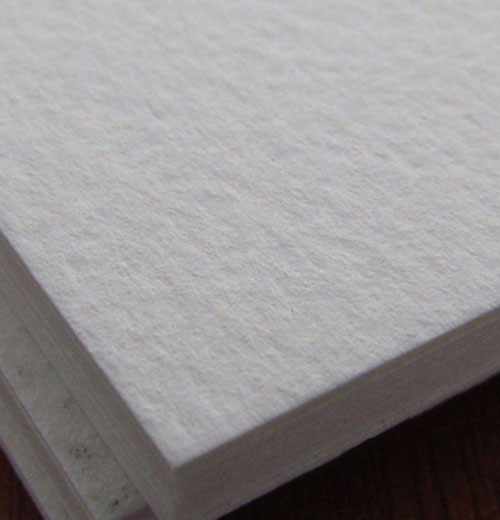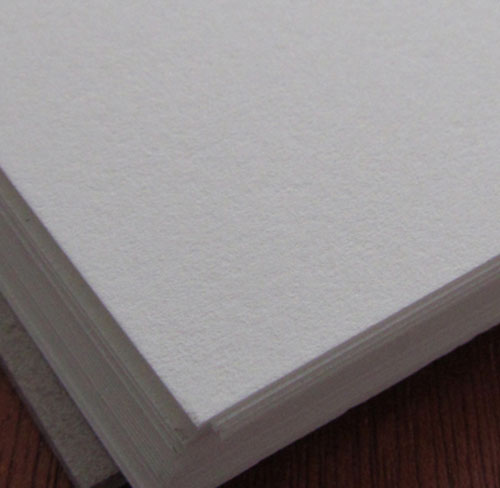Choosing Watercolour Paper

Watercolour papers come in three surface types – Rough, Cold Pressed, which is also known as Not, and Hot pressed. This guide lists each of their usual characteristics but it should be noted that papers differ from manufacturer to manufacturer and it is always best to experiment with different papers to judge which would be the most suitable for your style or effects you would like to achieve. All surfaces come in a range of weights and each Watercolourist will, again, get to know which they prefer to work with and all weights, unless particularly heavy, should ideally be stretched to get the best results from the paper.
Rough/Torchon/Grossa


Papers in this category have a grainy, undulating surface that is uneven and full of irregularities, ridges and indentations. This is as a result of the fibres being left to settle naturally without any pressing or from taking on the texture of the blankets between which they are gently pressed. They have a tendency to be the most absorbent of the three surface types meaning that the colour will soak into the paper quickly resulting in fewer water or drying marks and washes appearing smooth. The extra ‘facets’ of the rough surface of the paper allow more light to be reflected making the colours really shine brightly but it will not take numerous washes laid over each other as they will absorb down into a dull finish. Rough papers are, therefore, good for looser painting styles where the paint can be dabbed on and left to mix and blend in a natural, undisciplined way with little interference from the artist. Particularly good for artwork that is all about the colour.
Cold Pressed (Not)/Fin/Fina


Cold pressed paper is rough paper that has been run through a cold press a second time flattening the texture a little although the texture can remain quite prominent depending on the manufacturer. They are usually referred to as ‘Not’ as in ‘not hot-pressed’. They are 'sized' meaning that they are treated with substances to change the paper’s absorbancy and porosity – internally as well as on the surface allowing for some absorbency and yet enabling wet paint to be manipulated to a higher degree than on rough papers. This means that smooth washes can be achieved as well as interesting watermark effects where larger quanties of paint are left to pool. The surface of cold-pressed papers can be a little dull which can result in the paint lacking sharpness and intensity. Mixing the paint a little brighter than required will overcome this. On the whole, this is a versatile paper that can be used with many watercolour techniques. It is absorbant enough to take flat washes but is durable enough to take texturing techniques such as sgraffito, where the surface is scratched or even sanded.
Hot Pressed/Satine/Satinata


Hot pressed papers are a result of running the paper through a hot press to ‘iron out’ the texture and leave a very smooth surface. They are then usually heavily sized. With this type of finish, washes can be repelled which makes the paint puddle easily causing pronounced watermarks. If this is not the intended effect, the addition of ox gall to the water will reduce the surface tension of the water and allow the paint to flow better. The paper will, however, accept many washes laid over each other and works particularly well working wet-in-wet. But it really comes into its own for ‘tight’ detailed painting such as botanical or scientific illustration. The paint is not affected by any surface undulation and so the artist can control the brush strokes and the way the paint goes on in a precise manner. Also makes a great surface for pencil, pen and ink and printing.
Caring for Watercolour Paper
Store loose sheets of Watercolour Paper flat and away from damp. Pre-stretched paper may react to humidity and develop a slight ‘cockle’. This and any dents and creases that may occur whilst in storage can be ‘ironed out’ with stretching.
Watercolour Pads

The most common surface for pads is Cold-pressed and so there is an abundance of student-quality Watercolour Paper Pads on the market such as Winsor & Newton’s Cotman Pads as well as a range of Artist’s quality in Cold-pressed. The other surfaces tend to be more specialist and, therefore, made with the dedicated amateur or professional in mind.
Pads come in three formats, Spiral where pages are bound by a metal spiral, Gummed where the pages are gummed together along one-edge and Blocks where the pages are gummed on all four sides which removes the need to stretch the paper. You work on the top surface and then, once dry, slip a knife under the page to slice it way from the block to reveal the page below.
Curtisward pads include Bockingford Watercolour Paper in all three surfaces.
